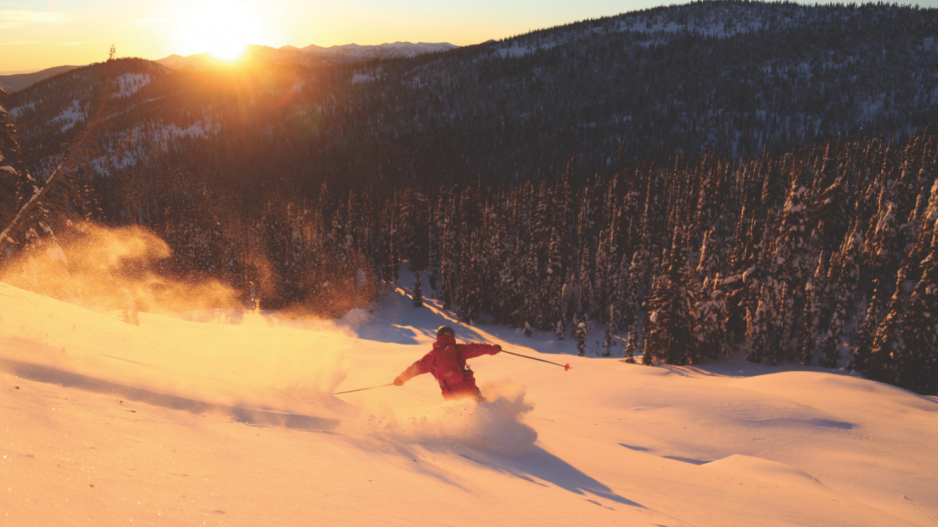After struggling through last year’s unusually warm winter, B.C. ski resorts are expecting a turnaround season, buoyed by a colder forecast and the low Canadian dollar.
Many ski hills have been able to open early, thanks to generous snowfalls.
“Having the heavy snowfalls early is important,” said Cynthia Thomas, marketing manager for the Canada West Ski Areas Association. “It’s really relieved a lot of people’s fears about the season.”
El Niño usually brings above-normal precipitation and temperatures, said Michael Pidwirny, a professor of environmental science at the University of British Columbia.
In the past, El Niño has dumped snow on B.C. mountains. But if temperatures aren’t cold enough, precipitation can fall as rain instead of snow; that’s what happened on Cypress Mountain during the 2010 Olympics, an El Niño year when snow had to be trucked in for some events.
The good news is that temperatures will not be as warm as they were during last year’s balmy winter. But whether it’s all downhill from here still remains to be seen, especially for ski resorts located near the coast.
“I expect [based on released seasonal forecasts] the coastal resorts will be significantly influenced by El Niño’s warm temperatures and lack of precipitation starting in late January and then extending into February and March,” Pidwirny wrote in an email.
Last year, an area of very warm water in the Pacific Ocean nicknamed “the blob” contributed to unusually warm temperatures. Several ski hills closed early in the season, including Mount Washington on Vancouver Island and Grouse Mountain, Mount Seymour and Cypress near Vancouver.
The blob is weakening but still present, said Nick Bond, a meteorologist at the University of Washington who has studied the phenomenon. He expects the effect to continue throughout this year and into 2016.
Coastal resorts are cautiously optimistic about the upcoming season.
“We’ve been thrilled with the number of returning season pass holders. It’s been our highest-ever returning season pass holder rate,” said Simon Whitehead, marketing manager at Mount Seymour.
Coastal hills are still feeling the pinch from last year: Mount Seymour will be hiring fewer staff this year, while Mount Washington has relied on less expensive social media campaigns so far for marketing.
Grouse Mountain has been emphasizing a full range of winter activities in addition to skiing and snowboarding, including a lighted walk around a lake, said marketing manager Julia Grant.
The resort has upgraded its snow-making equipment and brush cutting, which will help the ski hill make do with less snow if necessary. Mount Washington is also investing in snow-making equipment for the first time, said marketing manager Sheila Rivers.
Interior resorts are feeling more bullish. With colder temperatures and higher elevation, Big White near Kelowna was able to stay open for the entire 2014-15 season. This year the resort rolled out a $25,000 radio ad campaign for Vancouver-area audiences as soon as the first big snowfall arrived. It worked, said senior vice-president Michael Ballingall: the resort is fully booked for Christmas a month earlier than normal.
Ballingall is expecting the full-fledged return of Americans, especially from Seattle. He expects the low Canadian dollar to also boost visits from Australians, who make up 30% of the resort’s overnight guests.
Staff at Whitewater, a small ski resort near Nelson, travelled to a ski show in Spokane, Washington, with photographs and video of November snow conditions in hand.
“They were blown away because they don’t have much snow south of the border,” said Kirk Jensen, general manager for Whitewater.
Last year Whitewater had a delayed opening and by March 2015 had seen 12,000 fewer skier visits than the previous year. Jensen has high hopes that this year El Niño will provide.
“The last time we had a strong El Niño like this was 2009-10,” said Jensen.
“If you’ll recall, the Vancouver mountains didn’t do that well, but the hills in the Interior and Alberta had good winters and we actually had an amazing winter that year.”
@jenstden




